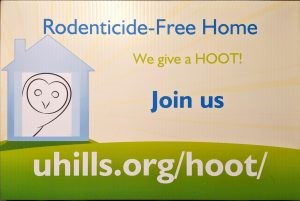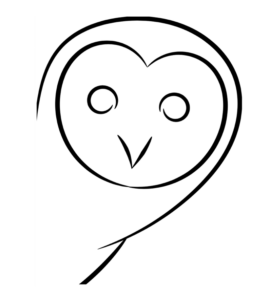Change the Conditions:
Sadly, snap traps and owls are not enough to reduce the rat population in Uhills. Residents need to make concerted efforts to avoid providing food and shelter to these unwanted guests. It means moving away from poison, relying on mechanical traps as a last line of defense, and focusing on sanitation and exclusion. And of course, getting a helping hand from owls and other raptors.
Here are a few tips for beginning your own Earth Friendly Management Policy (EFMP), a problem solving strategy that implements a natural organic approach to the total environment.
Take the Pledge & Share the News
Add your name to the list of 200+ Uhills residents who have already promised to avoid rodenticides. Let ICHA know that you want a poison-free uhills.
THE HOOT PLEDGE
Our household will not use rodenticides of any kind. We will do our best to reduce harborage and eliminate outdoor food and water sources that are attractive to rodents. If we choose to use snap traps for rodent control, we pledge to use enclosed traps so that we avoid harming other wildlife.
THE HOOT YARD SIGN
If you would like a yard sign (below) indicating that you support the efforts of the HOOT Group, please let us know.
Yard signs are sold at-cost for $12 each.

FAQ
Can I have a barn owl nesting box placed in my backyard?
The answer is maybe. Large trees with plenty of shade are the best sites for nesting boxes to be installed because the boxes heat up too much if they are installed out in the open. Nesting boxes will need to be placed in areas that are accessible for cleaning and repair. For about 8 weeks during the nesting season (February-June in southern California), barn owls make loud screeching sounds and the boxes can be odoriferous. This should be kept in mind when deciding on nesting box placement. Finally, you will need to submit a request for permission through the HRB-ICHA.

 HOOT stands for Help Our Owls Thrive!
HOOT stands for Help Our Owls Thrive!